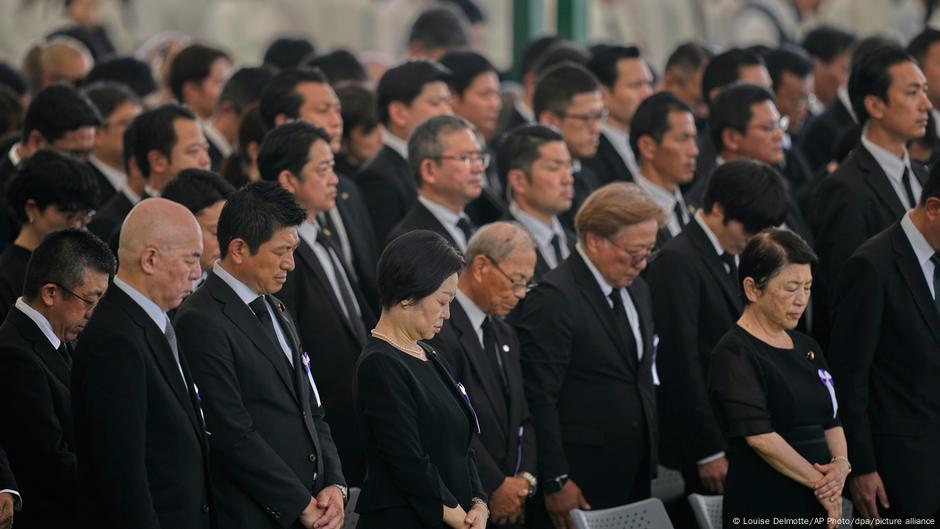The Japanese city of Hiroshima held a silent prayer at 8:15 a.m. (2315 GMT) on Wednesday.
That was the moment when US aircraft Enola Gay dropped the atomic bomb called “Little Boy” over the Japanese city on August 6, 1945.
Hundreds of officials, students and survivors laid flowers at the memorial cenotaph.
The ruins of the Genbaku Dome, the only structure left standing in the area where the bomb exploded, were visible in the background — a stark reminder of the horrors that unfolded.
Before dawn on Wednesday, survivors and their families came to pray at the peace memorial park as the sun rose over Hiroshima.
The dropping of the atomic bomb on August 6, 1945, flattened more than two-thirds of HiroshimaImage: United Archives International/IMAGO
Hiroshima seen as a warning of horrors of nuclear weapons
Hiroshima Mayor Kazumi Matsui warned in a speech against the growing acceptance of nuclear weapons and the “accelerating trend toward military buildup around the world,” against the backdrop of Russia’s invasion of Ukraine and the conflicts in the Middle East.
“These developments flagrantly disregard the lessons the international community should have learned from the tragedies of history,” he said.
Dozens of white doves, a symbol of peace, were released after the mayor’s speech.
Prime Minister Shigeru Ishiba said it was Japan’s mission “to take the lead … toward a world without nuclear weapons.”
Pope Leo XIV said in a statement that “in our time of mounting global tensions and conflicts,” Hiroshima and Nagasaki remained “living reminders of the profound horrors wrought by nuclear weapons.”
The US dropped an atomic bomb on Nagasaki three days after the bombing of Hiroshima.
UN Secretary-General Antonio Guterres warned that “the very weapons that brought such devastation to Hiroshima and Nagasaki are once again being treated as tools of coercion.”
The United States, which has never formally apologized for the bombings, was represented by its ambassador to Japan. It was among the some 120 countries and regions who sent representatives to the ceremony.
Hiroshima and Nagasaki only wartime use of atomic weapons
By the end of 1945, it’s estimated that the death toll from the uranium bomb detonated over Hiroshima was around 140,000 people. The explosion flattened more than two-thirds of the city.
A further 74,000 people were killed by the slightly large plutonium bomb dropped on Nagasaki.
In the years that followed, survivors faced side effects from the radiation such as leukemia or other cancers and chronic diseases.
Imperial Japan surrendered on August 15, bringing an end to World War II.
Nagasaki, Hiroshima survivors receive Nobel Peace Prize
To view this video please enable JavaScript, and consider upgrading to a web browser that supports HTML5 video
US, Russia hold most of world’s nuclear weapons
The attacks on Japan remain the only time atomic bombs have been used in wartime.
Nine countries hold nuclear weapons: the United States, Russia, the United Kingdom, France, China, India, Pakistan, the Democratic People’s Republic of Korea (North Korea) and Israel.
Russia and the United States together account for nearly 90% of the world’s more than 12,000 warheads, according to the Stockholm International Peace Research Institute, better known as SIPRI.
On the release of SIPRI’s most recent arms report in June, the organization warned that “we are now in one of the most dangerous periods in human history.”
“The abyss is beckoning and it is time for the great powers to step back and reflect. Preferably together.”
Edited by: Srinivas Mazumdaru


AloJapan.com